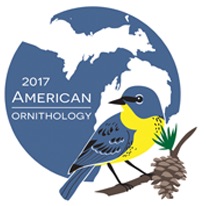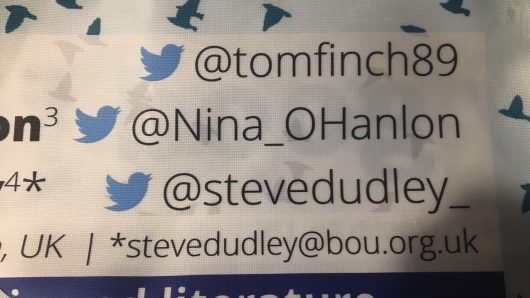 Ornithologists are a social bunch, which is easy to see at #AOSSCO17 here in Michigan. But can we measure how social they are in promoting their research, particularly online?
Ornithologists are a social bunch, which is easy to see at #AOSSCO17 here in Michigan. But can we measure how social they are in promoting their research, particularly online?
At #NAOC2016 last year, I attempted to measure the social media presence of those attending the largest ever ornithology meeting. The only group I found that was measurable was the poster authors. Over the two evenings of presentations I counted how many of the 450 presenters carried any social media tag (Twitter handle, Facebook tag, etc) on their poster.
The results were quite shocking, with <3% of poster presenters seemingly aware enough to tag their poster with a social media handle. Even some presenters who were active on platforms such as Twitter didn’t include their handle.
Since #NAOC2016 a small group of us have been collating similar data for other events and coming in to #AOSSCO17 I knew what I needed to. For me this event was significant as it was a year on from the larger #NAOC2016 which incorporated this annual meeting of the AOS. So would we see any difference in just a year from a similar largely North American group of presenters.
The answer is yes! Of the 114 posters presented at #AOSSCO17, 11% carried social media tags. These ranged from well presented and easy to see tagging to a couple I missed on my rounds of viewing as they were not obvious (e.g. so small they were virtually hidden) or for two that I had mistook for emails as they were used within a block of text. So if I was missing tags when I was purposely looking for them, others are likely to miss them too, completely negating the inclusion of the tag.

This increase between consecutive US ornithology conferences only a year apart is really encouraging and shows an improved awareness of the benefits of using social media within, and for, research.
Our own events in the UK are on a smaller scale than those in the US, but nonetheless show a much stronger awareness and use of social media. #BOU2017 saw 27% of poster presenters using social media tags, and overall 38% of conference delegates were on social media.
99% of social media users at conferences use Twitter which reflects the active and dynamic community we’ve developed on this platform in particular over recent years.
About the author
Steve Dudley, the BOU’s Senior Administrator of 20 years, has overall responsibility for the day to day running of the BOU and all our activities including social media and communications.
And there’s more . . .
We have lots of articles on the benefits of using social media for research. Here are a few, and many more here.
Making social media and the web work for you
How social are ornithologists? – Steve Dudley & Jen Smart’s IBIS paper
How social are ornithologists? – Steve Dudley & Jen Smart’s NAOC2016 poster
Let the BOU work for YOU . . altmetrics
Let the BOU work for YOU . . with blogging
Let the BOU work for YOU . . on social media
Social media is relevant to your research
The role of social media in ornithology – presentations from the BOU’s and RSPB Science’s #EOU2015 Round Table
Twitter #masterclass 8 – Conference tweeting
Twitter #masterclass 12 – best practices
Blog with #theBOUblog
If you want to write about your research in #theBOUblog, then please see here.




